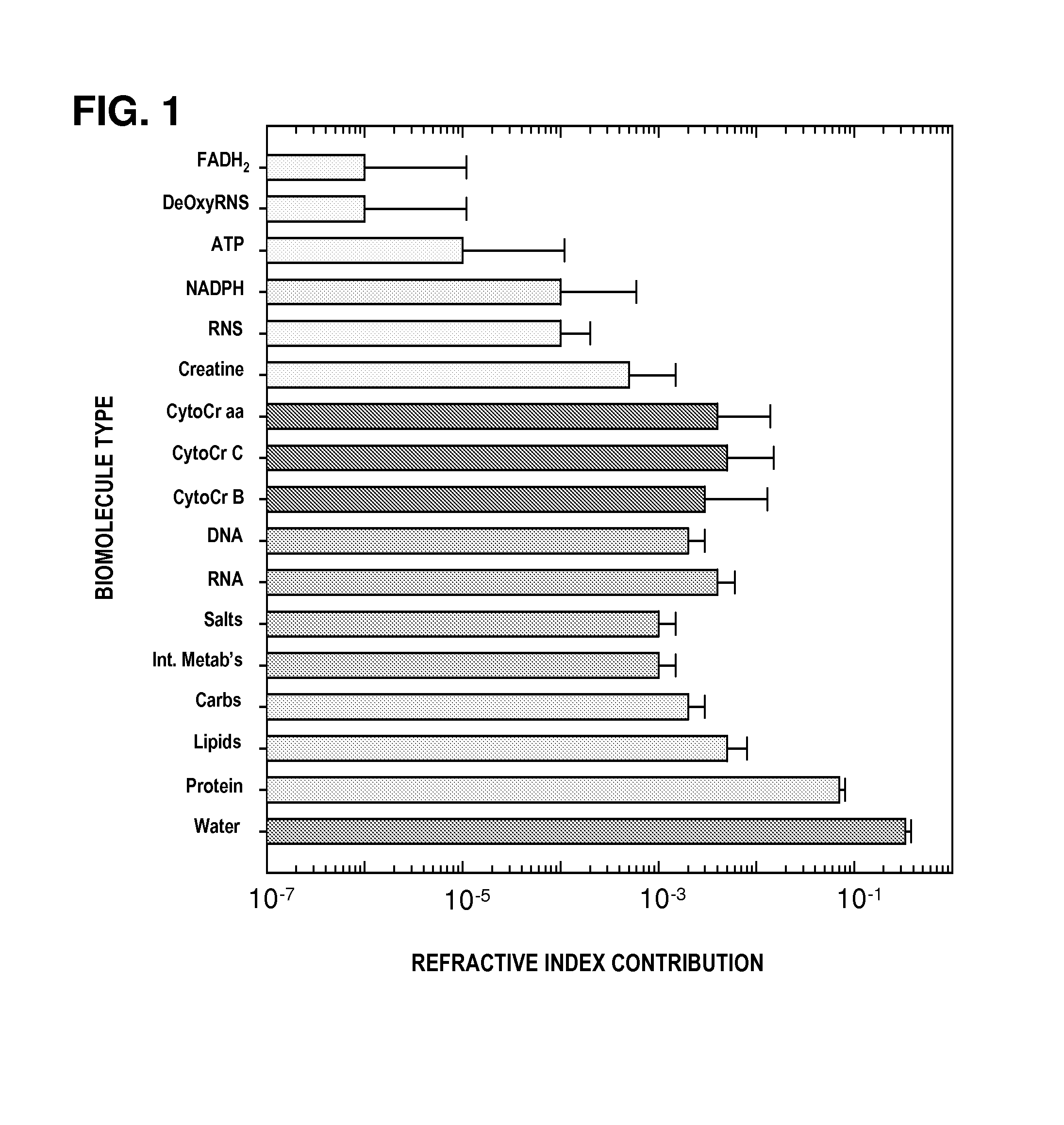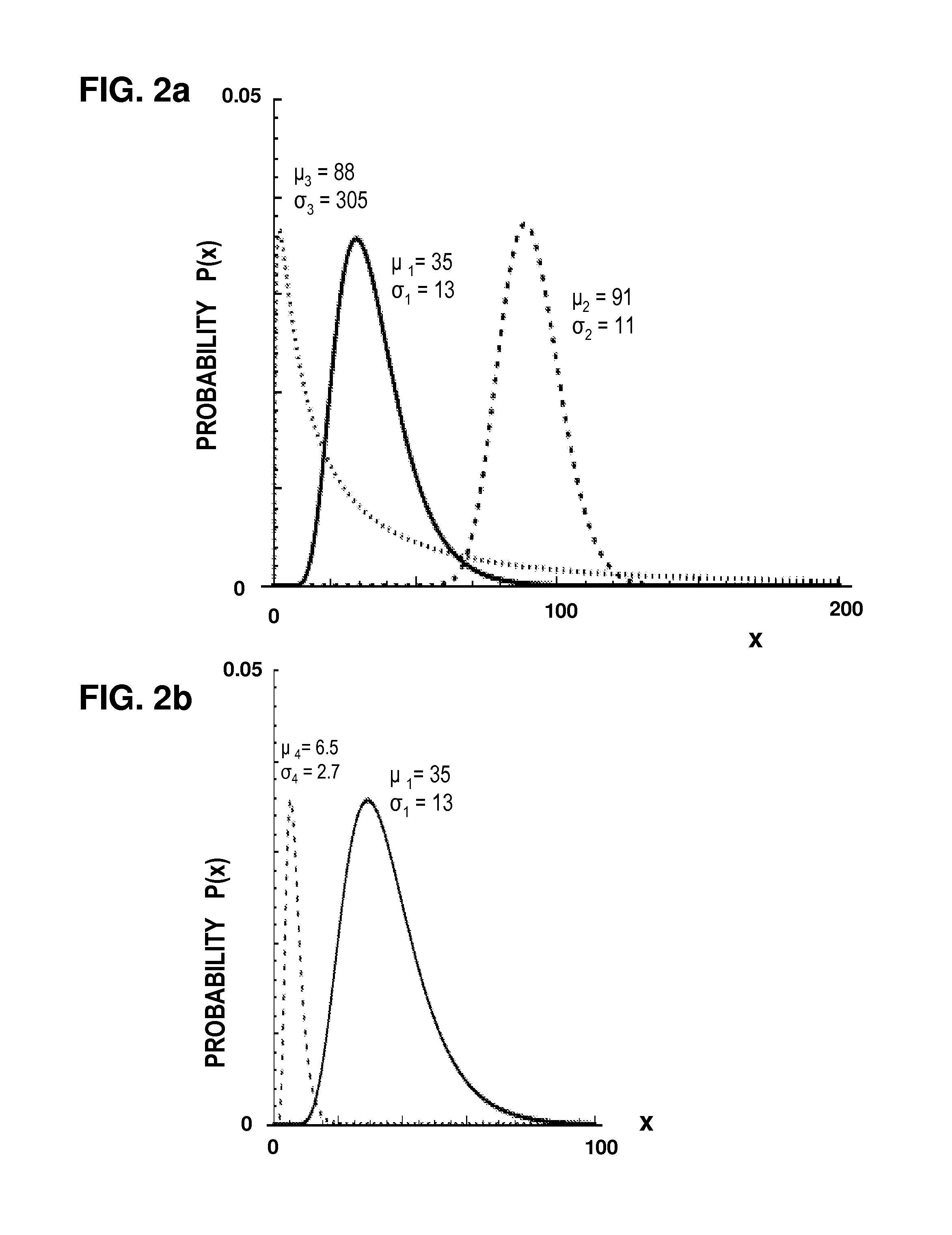Nanolaser spectroscopy and micro-optical resonators for detecting, analyzing, and manipulating bioparticles
a technology of microoptical resonance and nanolaser spectroscopy, which is applied in the direction of optical radiation measurement, instruments, spectrometry/spectrophotometry/monochromators, etc., can solve the problems of inaccuracy in determining biophysical parameters and errors in computation of so as to achieve rapid and accurate analysis of optical properties, rapid differentiation between diseased and healthy individuals, and maintain the effect of measurement fidelity
- Summary
- Abstract
- Description
- Claims
- Application Information
AI Technical Summary
Benefits of technology
Problems solved by technology
Method used
Image
Examples
microscopy embodiment
[0081]Another embodiment of the measurement and analysis method is to use interference microscopy with an apparatus shown in FIGS. 7 through 9. In FIG. 7 light from source 52 is directed toward a resonant cavity (with or without gain) 28 with lens 54 and then the image of the cavity is relayed with lens 24 to an imaging device 50 and / or to a spectroscopy / detector device 44 / 46. The output of these devices is linked to a computer 48 for analysis. The light source could be a laser, LED, lamp, fiber optic source or the like. Alternately the light source could be contained in the cavity (semiconductor, fluorescent material, or the like). The light interacts with the cavity to establish optical resonances that can be observed by a detector. These conditions can be detected by the imaging device or spectral device. When bioparticles are inserted into the cavity, the light interacts with the particle / cavity and produces a light signal (transmitted, reflected, scattered, fluorescence or the ...
PUM
| Property | Measurement | Unit |
|---|---|---|
| refractive index | aaaaa | aaaaa |
| volume | aaaaa | aaaaa |
| volume | aaaaa | aaaaa |
Abstract
Description
Claims
Application Information
 Login to View More
Login to View More - R&D
- Intellectual Property
- Life Sciences
- Materials
- Tech Scout
- Unparalleled Data Quality
- Higher Quality Content
- 60% Fewer Hallucinations
Browse by: Latest US Patents, China's latest patents, Technical Efficacy Thesaurus, Application Domain, Technology Topic, Popular Technical Reports.
© 2025 PatSnap. All rights reserved.Legal|Privacy policy|Modern Slavery Act Transparency Statement|Sitemap|About US| Contact US: help@patsnap.com



